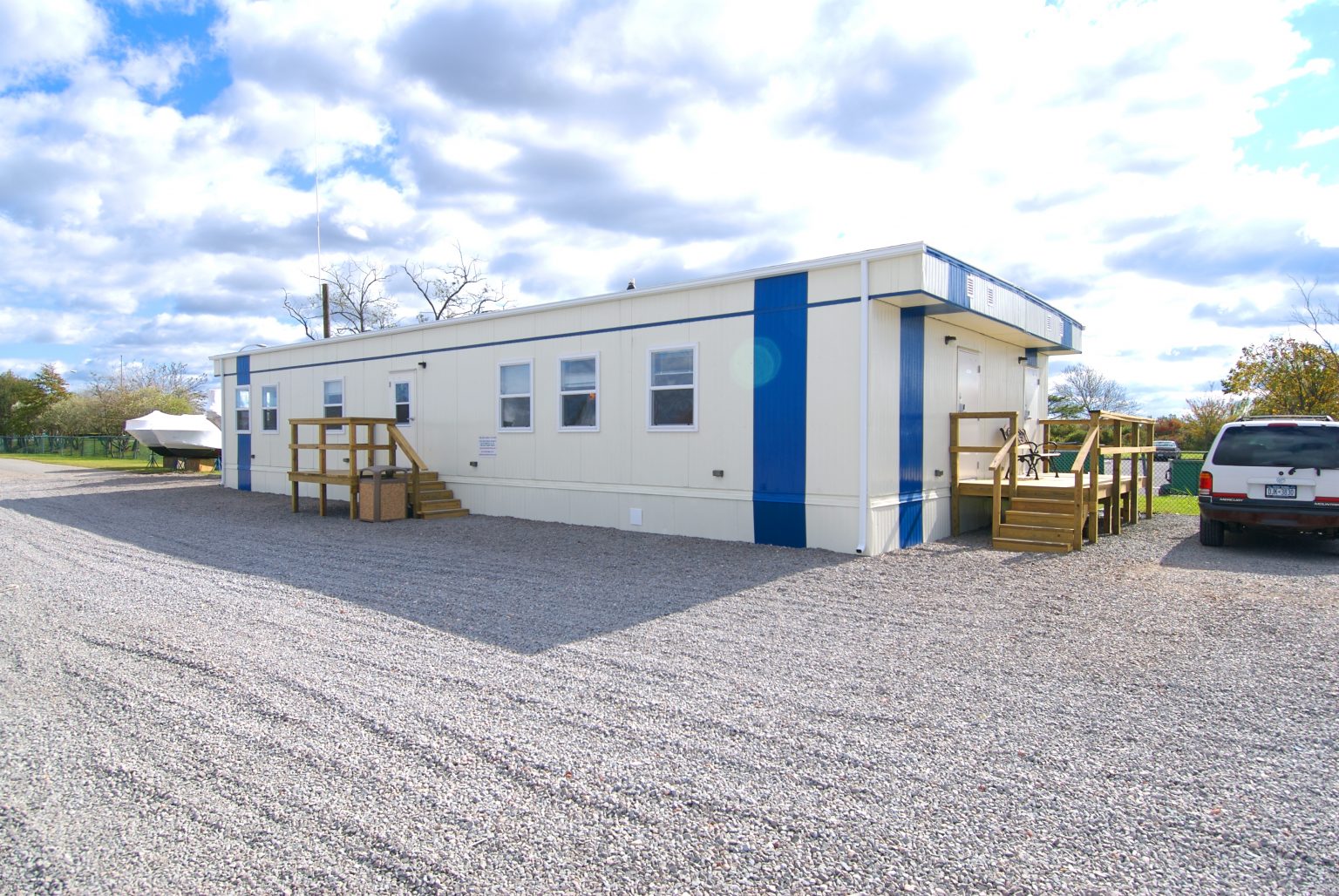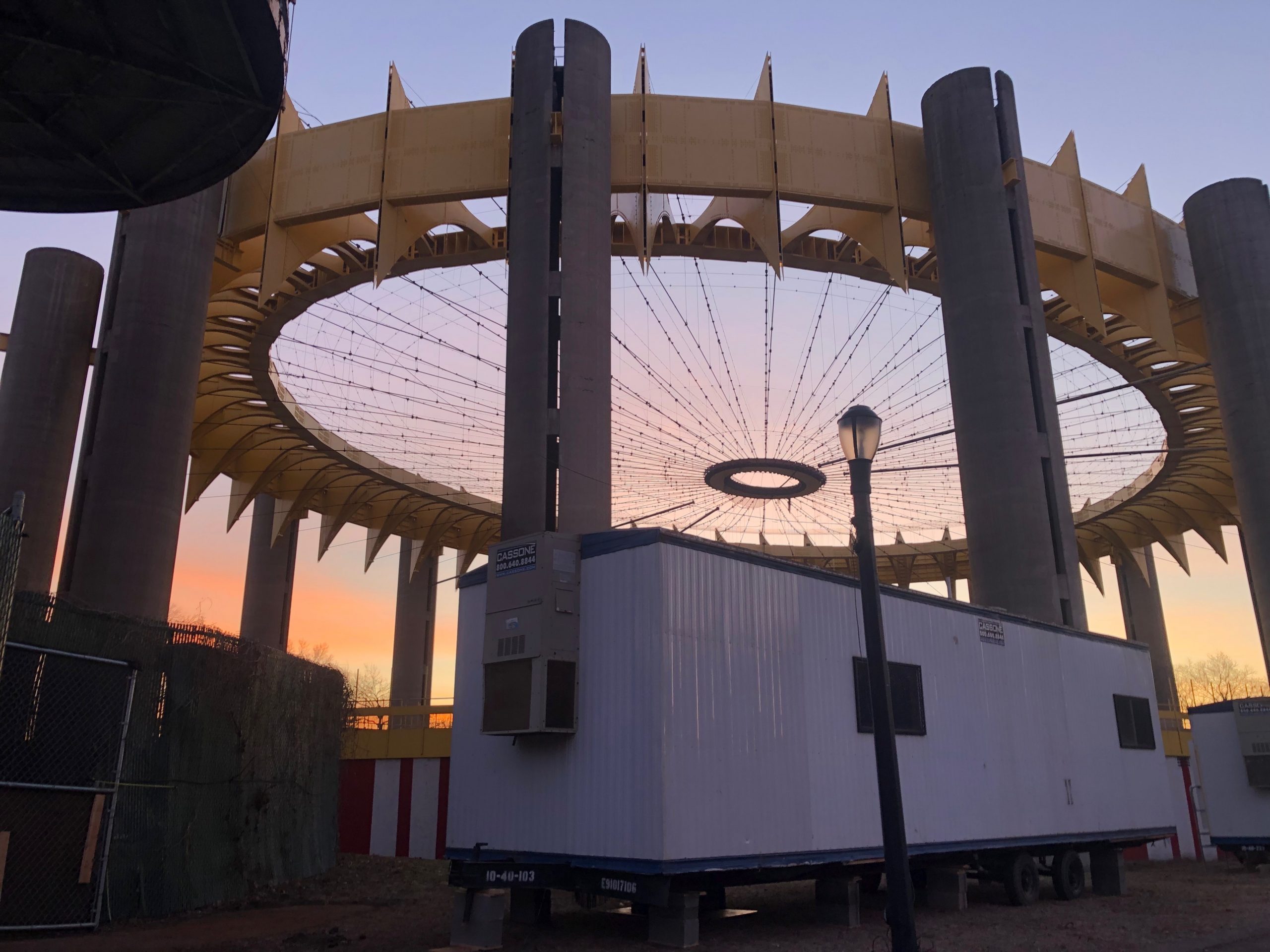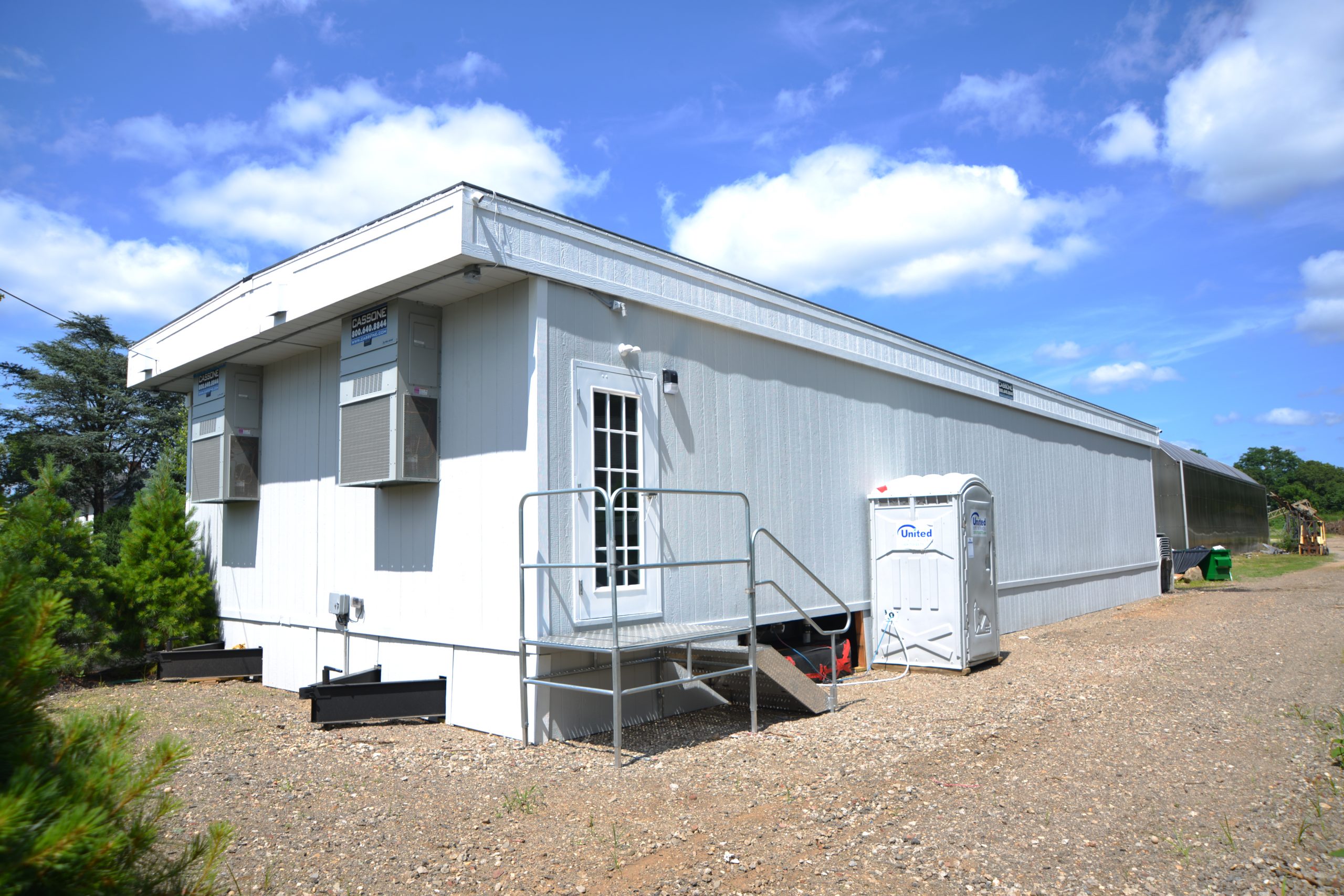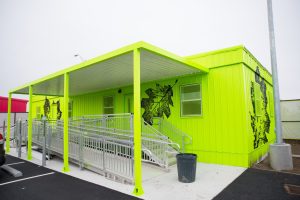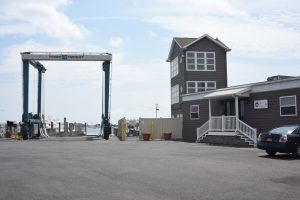Are Permanent Modular Office Buildings for You?
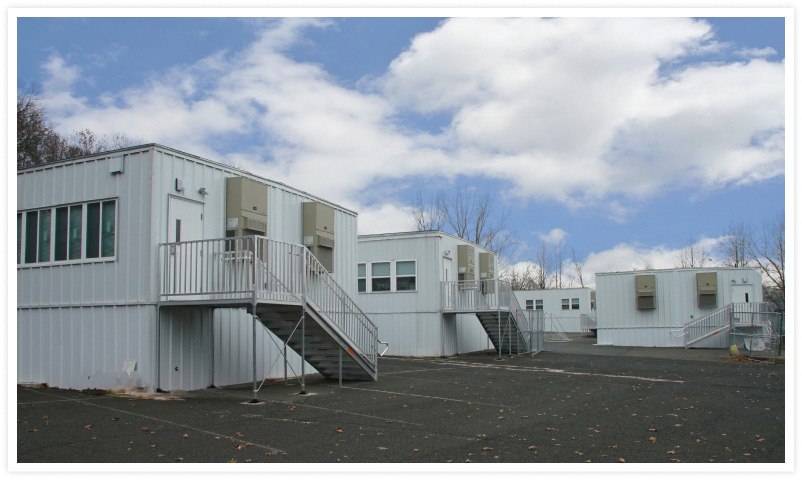
There is good reason behind the rising popularity of permanent modular construction, with savings in cost and time being key advantages. While some might view the assembly process as unconventional, what you get at the end is a highly durable structure that you may customize to your liking. Besides, permanent and temporary modular buildings adhere to the same building codes as conventional structures. So, are permanent modular office buildings the right solution for you?
What Are Permanent Modular Buildings?
A modular building comes with prefabricated modules and sections manufactured in factories. This is the case with permanent and temporary modular structures alike. Built under highly controlled settings in production lines, different components of the building make it to the desired site, where trained professionals complete the assembly. Some modular construction companies have already started using automated robotic assembly lines to further streamline the process.
Based on the intricacies involved in a project, it’s possible to complete up to 90% of the work offsite. In addition, what reaches the site at the end can be a complete structure or sub-assembled units. In case of the latter, the assembly requires use of inter-module connections.
Depending on the available space, it’s possible to place modular units side by side or stack them vertically. You may expect high quality control levels with modular buildings because they need to adhere to the same building codes that apply to structures made using traditional construction methods.
What Is the Lifespan of a Modular Building?
The service life of modular buildings is comparable to buildings made using traditional construction methods. In addition, much like traditional construction, the longevity you may expect from modular construction depends on whether its installation takes place in the right manner and its ongoing maintenance. This includes frequent inspections of components like roofing, flooring, exterior decks and sidings, as well as mechanical, plumbing, and HVAC systems.
Are modular buildings temporary? Well, while you can get temporary modular buildings, know that not much sets them apart from their permanent counterparts. With ongoing maintenance, you may expect a permanent modular building to last upward of 50 years. When it comes to temporary modular buildings, they tend to have a lifespan of 25 to 30 years. Recycling or repurposing their components follows.
What Are Temporary Modular Buildings?
It’s common for people to ask, “What is the difference between permanent and temporary modular construction?” and it’s easy to summarize the answer. Modular construction companies that build temporary office buildings follow the same basic manufacturing principles that apply to permanent structures. In addition, it’s possible to integrate temporary buildings with existing structures, just like permanent buildings.
What sets temporary modular buildings apart from their permanent counterparts is that it’s possible to relocate them. Modular construction companies design and build temporary structures so you may transport them from one location to another. Repurposing or reusing temporary modular buildings is fairly easy. If you have a short-term or fluctuating space requirement, a temporary solution might work better for you than a permanent one.
Advantages of Modular Construction
If you compare permanent modular construction methods with traditional methods, you will notice that the former offers several advantages. These extend beyond reduced construction time and lower costs.
Speed of Construction
A McKinsey report suggests that turning to modular construction can bring project timelines down by 20% to 50%. This is mainly because the prefabrication of modules takes place in factories, and any required onsite foundation work takes place at the same time.
Minimal Weather-Related Delays
Highly controlled settings in modular construction factories ensure minimal weather-related delays. Besides, since these units make it to their final destinations in the form of prefabricated modules, you may expect minimal weather-related delays during the assembly process. Workers work in safer and more comfortable environments when compared to traditional construction methods, which paves the way for increased productivity.
The Cost Factor
The McKinsey report referred to earlier states that modular construction can help reduce costs by up to 20%. However, it highlights that this largely depends on costs surrounding materials and logistics. Modular construction companies can address labor costs by giving workers the ability to work at fixed locations and have stable jobs. You may also look forward to long-term savings through reduced maintenance and operational costs.
Minimal Workflow Delays
Imagine an office that continues to run as construction takes place. Then, imagine the office covered in dust from drywall, with clutter you’d rather avoid. Disruptions in any such setting are all too normal. Modular construction addresses this concern effectively, given that most of the work takes place offsite. Besides, you don’t have to make extra room for storing different types of construction material.
Lower Waste
Modular building companies run on the tenets of reduce, recycle, and reuse. This is why you get to see the use of recycled steel, wood, and glass in modular buildings. If there is leftover material from one project, it tends to find use in another. There are other ways in which modular technology is paving the way for sustainable construction too.
Modular Building Institute’s Permanent Modular Construction report indicates that reducing the use of materials such as concrete, bricks, cement, timber, wood pallets, cardboard, and plasterboard can help minimize construction waste by up to 90%. Modular construction holds the potential to deliver on this front as well.
Option to Rent or Buy
If your need for extra space extends to more than a year and involves a large building, you may consider leasing or renting. If you wish to rent a standalone modular office or don’t need much space, you may rent one for even a few months. However, if you’re looking for a permanent structure or need the added space for three years or more, buying a modular building might work better for you.
Ability to Customize
Modular building companies give you considerable freedom when it comes to customizing your office space. For starters, you get to choose from different sizes, shapes, and floor plans. Adding electrical and plumbing systems is straightforward, as is installing HVAC systems. However, the features and fixtures you may expect depend on the company you select. Some of the common customization options revolve around:
- Walls and flooring
- Roofing
- Furniture
- Data and phone lines
- Energy-efficient lighting
- Eco-friendly insulation
Addressing Employee Concerns
According to Microsoft’s Work Trend Index report, more than 70% of employees favor flexible work options, whereas 65% wish to spend more time in person with their teams. As a result, 66% of people in decision-making positions are thinking about redesigning their existing spaces to optimize them for hybrid work. When this is the case, it pays to find out what employees want.
- Personal space and privacy. There is adequate evidence to show that many employees find it hard to perform optimally if they don’t have privacy/personal space. Open office layouts come with various shortcomings, some of which include higher stress levels, decreased productivity, and a rise in absenteeism rates.
- Noise. Complaints about undesirable noise levels are fairly common at coworking spaces and cubicle farms. Such spaces are also prone to disruptions.
- Comfort. When it comes to uncomfortable work environments, common complaints surround HVAC systems, ventilation, furniture, and lighting. An article found on the ScienceDirect website shows the effect of thermal comfort on employees’ comfort, productivity, and other parameters, highlighting the importance of this factor alone.
- Structure. While a cluttered or unorganized office tends to impact productivity negatively, a structured workspace usually has the opposite effect. Without predefined procedures, employees might face challenges in finding the information or resources they require. Employees of some organizations complain about poor filing systems too.
Optimizing Modular Office Space for Employees
You get to optimize a permanent modular office building in different ways if you wish to steer clear of factors that can have a negative effect on productivity.
Focus on Comfort
The presence of natural light plays an important role in creating a comfortable work environment. A Harvard Business Review article highlights the results of a study that indicate 78% of employees feel access to natural light affects their well-being in a positive manner, whereas 70% feel it improves their work-related performance. Adding adequate windows to a modular office building ensures that it gets plenty of natural light.
Maintaining ambient temperature in a modular office building is fairly easy if you use smart thermostats with remote sensors. You can run these devices remotely and program them to adapt to different schedules. The furniture your employees use must be comfortable because this has an effect on their overall well-being as well.
Promote Well-Being
A survey carried out by the Chartered Institute of Personnel and Development (CIPD) indicates that 75% of respondents felt senior leaders paid attention to the well-being of employees. While providing onsite fitness facilities is one to go about the process, focusing on emotional, cognitive, and physical well-being tends to have a better effect.
With permanent modular construction, you get to incorporate different ergonomic elements into your building. For example, simply investing in ergonomic chairs and sit-stand desks can give employees two great options from which to choose. Ensuring that important workspaces are near windows can help with natural light and also bring nature a little closer to your employees.
The use of indoor plants can help regulate indoor air quality and they also have a positive effect on energy levels, creativity, and productivity.
Make Way for Collaboration and Privacy
One great aspect of modular office complexes and buildings is that they give you the ability to be flexible. For example, if you require personal areas, you may choose from cubicles, offices, quiet zones, brainstorming spaces, and conference rooms. On the other hand, if you need a workspace that thrives on a collaborative approach, you may opt for a largely open layout. If you choose an open layout, make sure you still provide some space for employees to carry out focused work as and when the need arises.
Shift to Fluid Furniture
Modular buildings enable businesses to function efficiently even through changing circumstances mainly because they are easy to reconfigure. In addition, when you invest in fluid furniture, rearranging/reorganizing different components like chairs, tables, desks, and cabinets becomes rather simple and takes little time. Modular walls, on the other hand, give you easy means to create new sections.
Think Long-Term
When investing in a permanent modular office building, it makes sense to plan for the future. For example, if you feel business growth might require you to get more space for employees down the line, you might want to adopt a suitable floor plan ahead of time. While scaling up a modular office building is easier than one made using traditional construction methods, making plans in advance simplifies the process even more.
Selecting a Modular Building Company
One of the key factors that have an effect on the outcome of your project and the longevity of your modular building is the company you select. Here are aspects that need your attention before making a decision.
- Experience. With experience comes expertise and increased industry knowledge. Inadequate experience, on the other hand, may lead to cost escalations and delays. Having partnered with businesses from your field in the past is an added advantage.
- Predictability. This includes predictability in pricing and scheduling. Companies that carry out a majority of the work in-house tend to provide better cost predictability. From the scheduling perspective, this holds true for companies that follow streamlined processes.
- Customization. Not all modular building companies offer the same levels of customization, so you need to partner with one that can deliver on your requirements.
- Financing. If you need financing for your modular building and cannot get a traditional mortgage, you may consider selecting a company that provides lease-to-own options.
- Customer service. This aspect requires your attention because the company you select should be able to address your concerns quickly and efficiently.
Conclusion
Now that you know what a modular office space is and the benefits you may expect, you may consider investing in one if you feel it meets your requirements. If you decide to move forward, start by establishing how long you need the structure for, and then look for permanent or temporary solutions accordingly. Remember that there are several modular building companies out there, so you need to ensure selecting one that is capable of meeting your expectations.


